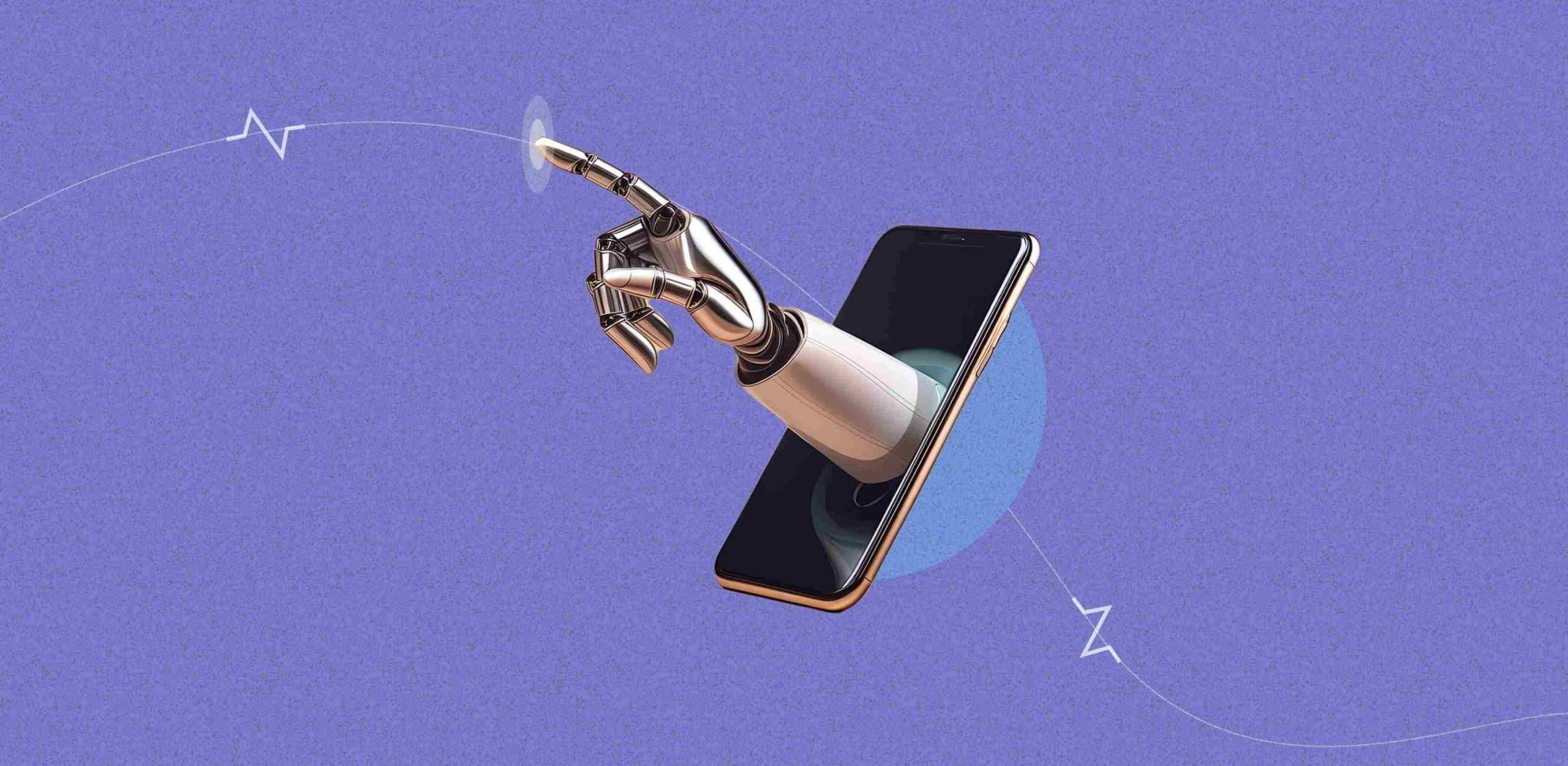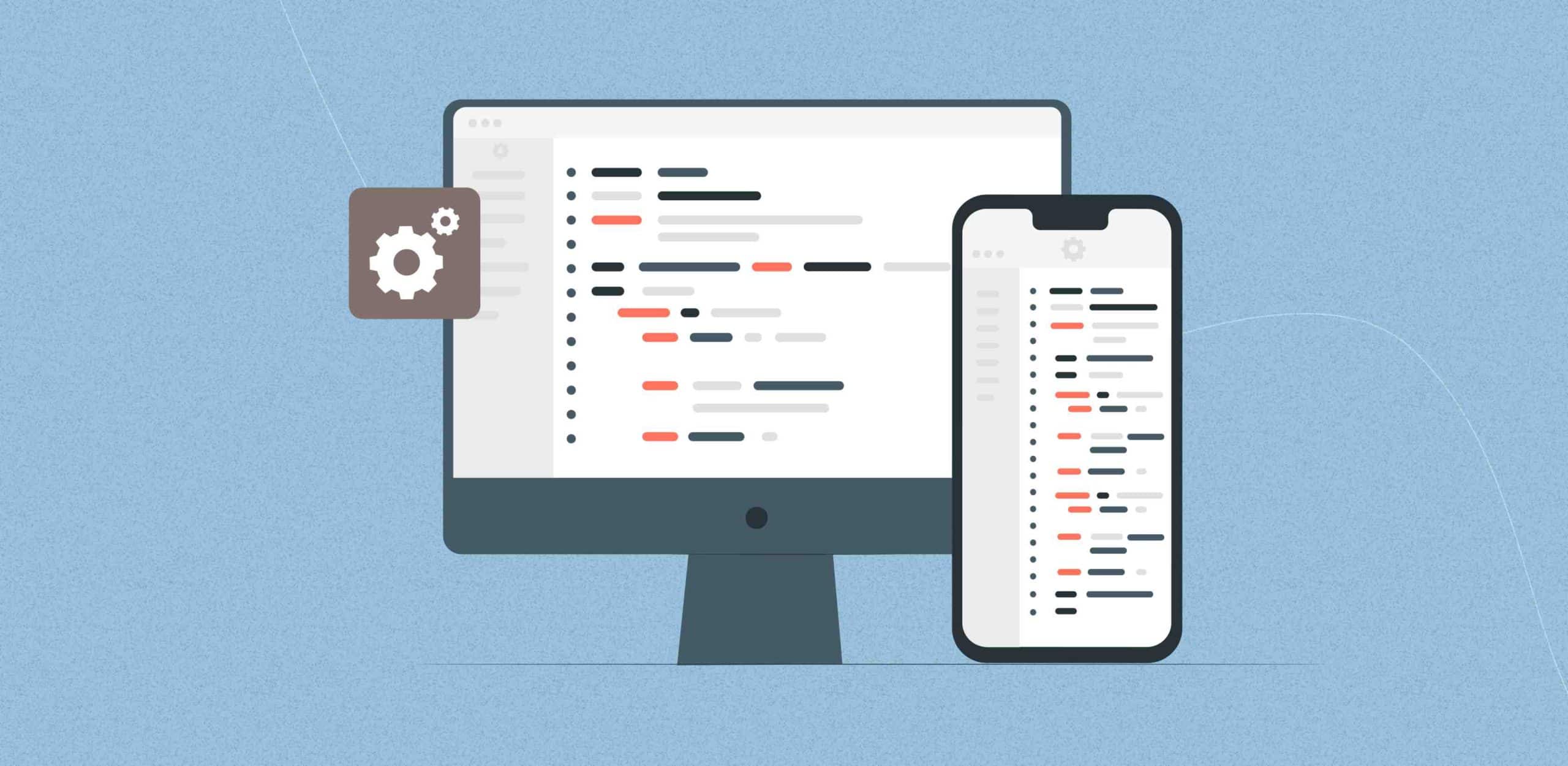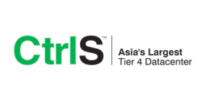Custom software development is leveraging Artificial Intelligence (AI) and machine learning to revolutionize the healthcare industry, driving innovation and efficiency. These technologies enable more accurate diagnoses, personalized treatments, and improved patient outcomes. Predictive analytics, one of the most transformative applications of AI and machine learning, uses data and statistical algorithms to foresee health trends, predict patient outcomes, and optimize resource allocation.
This blog explores how custom software development harnesses AI and machine learning for predictive analytics in healthcare, delving into their rise, understanding predictive analytics, examining the role of custom software, and highlighting key AI and machine learning techniques.
The Rise of AI and Machine Learning in Healthcare
AI and machine learning have seen remarkable growth in healthcare over the past decade. Initially, these technologies were applied in research and development, but they have now permeated various aspects of healthcare delivery, from diagnostics to treatment planning and patient monitoring.
The journey of AI and machine learning in healthcare began with simple rule-based systems in the 1970s. These early systems, though limited, laid the foundation for more sophisticated applications. The advent of big data, advancements in computational power, and the development of more complex algorithms have propelled AI and machine learning into mainstream healthcare applications.
Read more on Custom Software Development for Startups: Minimizing Costs and Maximizing Impact.
Today, AI and machine learning are used in numerous healthcare settings. From AI-powered imaging systems that assist radiologists in detecting abnormalities to machine learning algorithms that predict patient readmissions, these technologies are enhancing the accuracy and efficiency of healthcare delivery. Notably, the COVID-19 pandemic accelerated the adoption of AI and machine learning, as they played a crucial role in tracking the virus’s spread, developing vaccines, and managing patient care.
Understanding Predictive Analytics
Predictive analytics in healthcare involves the systematic analysis of current and historical data to forecast future events. This sophisticated process leverages data mining, statistical techniques, and machine learning to create models capable of predicting outcomes with remarkable accuracy. By identifying trends and patterns within vast datasets, predictive analytics empowers healthcare providers to make informed decisions, enhancing patient care and operational efficiency.
Key Components
Data Collection
The foundation of predictive analytics is robust data collection. Healthcare providers gather extensive data from a variety of sources, including electronic health records (EHRs), medical devices, patient surveys, and administrative systems. This data encompasses patient demographics, medical histories, treatment plans, diagnostic results, and real-time health metrics. Effective data collection ensures a comprehensive dataset that can be analyzed to generate meaningful insights.
Data Analysis
Once data is collected, the next step is data analysis. This involves using advanced statistical methods and machine learning algorithms to sift through the data, identify patterns, and uncover correlations. Techniques such as clustering, classification, and regression analysis help in understanding complex relationships within the data. By transforming raw data into actionable insights, healthcare providers can detect early warning signs of diseases, predict patient outcomes, and identify potential treatment options.
Machine Learning Algorithms
Machine learning algorithms are at the core of predictive analytics. These algorithms learn from historical data, continuously improving their predictive capabilities over time. Commonly used algorithms in healthcare predictive analytics include:
- Regression Analysis: Helps in predicting numerical outcomes based on input variables.
- Decision Trees: Used for classification and regression tasks, providing clear decision paths.
- Neural Networks: Complex models that simulate human brain functions, capable of handling large datasets and recognizing intricate patterns.
Benefits
Predictive analytics offers numerous benefits in healthcare, significantly transforming patient care and operational processes:
- Early Diagnosis: One of the most crucial benefits of predictive analytics is the ability to identify patients at risk of developing certain conditions. By analyzing patient data, predictive models can detect early signs of diseases such as diabetes, cardiovascular conditions, and cancer. Early diagnosis allows for timely intervention, improving patient outcomes and potentially saving lives.
- Personalized Treatment: Predictive analytics enables personalized treatment plans tailored to individual patient needs. By considering factors such as genetic information, lifestyle choices, and previous treatment responses, healthcare providers can develop customized treatment strategies. This approach enhances the effectiveness of treatments, minimizes side effects, and increases patient satisfaction.
- Resource Management: Efficient resource management is vital for healthcare organizations. Predictive analytics helps hospitals and clinics optimize resource allocation, such as staffing, inventory management, and bed occupancy. By predicting patient admission rates and treatment durations, healthcare facilities can ensure they have the necessary resources available, reducing costs and improving efficiency.
- Disease Outbreak Prediction: Predictive models play a critical role in forecasting disease outbreaks. By analyzing epidemiological data, social media trends, and environmental factors, public health officials can predict the spread of infectious diseases. Early predictions enable proactive measures, such as targeted vaccination campaigns and public health advisories, to control the spread of diseases and protect communities.
Role of Custom Software Development
Custom software development plays a crucial role in harnessing the power of AI and machine learning for predictive analytics in healthcare. Unlike off-the-shelf solutions, custom software is tailored to meet the specific needs of healthcare organizations, ensuring optimal performance, integration, and compliance with industry standards.
Customization Needs
The healthcare sector has unique and complex requirements that generic software solutions often cannot address. Custom software development for healthcare predictive analytics offers tailored solutions designed to meet these specific needs. Custom solutions ensure seamless data integration, robust security measures, and adherence to regulatory standards, making them essential for effective predictive analytics in healthcare. This customization includes:
- Data Integration: Ensuring that the software can effectively integrate with various data sources, such as electronic health records (EHRs), medical devices, and patient management systems.
- Security: Implementing advanced security protocols to protect sensitive patient data and comply with regulations such as HIPAA and GDPR.
- Compliance: Custom software is built to meet the specific compliance requirements of the healthcare sector, ensuring that all data handling and processing adhere to legal standards.
Development Process
Custom software development for predictive analytics involves a comprehensive and meticulous process to ensure that the final product meets the healthcare organization’s needs. The process typically includes the following stages:
- Requirement Gathering: This initial phase involves working closely with healthcare stakeholders to understand their specific needs, challenges, and goals. Detailed interviews and discussions help identify the necessary features and functionalities of the software.
- Design: Based on the gathered requirements, a detailed design of the software solution is created. This includes data flow diagrams, user interface designs, and technical specifications that outline how the software will function and interact with existing systems.
- Development: The actual coding and building of the software take place in this stage. Developers write the code based on the design specifications, ensuring that all functionalities are implemented correctly.
- Testing: Rigorous testing is conducted to ensure the software functions correctly, securely, and efficiently. This includes unit testing, integration testing, and user acceptance testing to identify and fix any issues before deployment.
- Deployment: Once the software has passed all tests, it is deployed in the healthcare environment. This involves installing the software, configuring it to work with existing systems, and ensuring it operates smoothly in the real-world setting.
- Maintenance: Ongoing support and updates are provided to keep the software running smoothly and efficiently. This includes fixing any bugs that arise, updating the software to address new requirements or regulations, and ensuring it continues to meet the organization’s needs over time.
Key AI and Machine Learning Techniques Used in Healthcare Predictive Analytics
By understanding various AI and machine learning techniques, we can appreciate how they contribute to more accurate predictions, improved patient outcomes, and overall enhanced efficiency in healthcare delivery.
Overview of Techniques
Several AI and machine learning techniques are commonly used in healthcare predictive analytics:
- Supervised Learning: In supervised learning, algorithms are trained on labeled data to make predictions. This technique involves feeding the algorithm a dataset where the input-output pairs are known, allowing the model to learn the mapping from inputs to outputs. Common examples of supervised learning algorithms include logistic regression, which predicts binary outcomes, and support vector machines, which can classify data into different categories. Supervised learning is particularly useful for tasks where historical data with known outcomes is available, enabling the algorithm to learn from past examples to predict future events.
- Unsupervised Learning: Unsupervised learning algorithms identify patterns in unlabeled data, where the outcomes are not provided. These algorithms are designed to uncover hidden structures in the data. Examples include clustering algorithms, which group similar data points together, and principal component analysis (PCA), which reduces the dimensionality of data while retaining its most important features. Unsupervised learning is valuable for exploratory data analysis, where the goal is to discover patterns or relationships within the data without prior knowledge of the outcomes.
- Neural Networks: Neural networks, particularly deep learning models, mimic the human brain’s structure and function. They are capable of handling complex data and making highly accurate predictions. Neural networks consist of multiple layers of interconnected nodes (neurons), each performing a linear transformation followed by a non-linear activation function. This architecture allows them to learn intricate patterns and representations from the data. Deep learning models, such as convolutional neural networks (CNNs) and recurrent neural networks (RNNs), are widely used in image and speech recognition tasks due to their ability to process and analyze high-dimensional data.
- Natural Language Processing (NLP): NLP encompasses techniques that allow machines to understand and interpret human language. In healthcare, NLP is used to analyze clinical notes, patient records, and other unstructured text data. Techniques like tokenization, part-of-speech tagging, and named entity recognition help extract meaningful information from text. NLP applications in healthcare include sentiment analysis to gauge patient feedback and automatic summarization of clinical documents to assist healthcare providers in decision-making.
Advantages
The use of these AI and machine learning techniques in predictive analytics offers several advantages:
- Improved Accuracy: AI and machine learning models can process vast amounts of data and identify complex patterns that may be missed by traditional statistical methods. This leads to more accurate predictions and better-informed decision-making.
- Faster Decision–Making: Automated predictive models provide real-time insights, allowing healthcare providers to respond more quickly to potential issues. This is particularly important in critical care settings where timely intervention can save lives.
- Efficient Data Processing: AI and machine learning algorithms can handle large datasets efficiently, extracting meaningful information without manual intervention. This reduces the workload on healthcare professionals and allows them to focus on patient care.
Get in touch with us to explore custom software solutions for your startup!
Future Prospects
In this section, we will explore the exciting future prospects of AI and machine learning in healthcare predictive analytics. From innovative advancements on the horizon to the profound long-term impact on healthcare systems, we will delve into how these technologies will continue to transform the industry. Industry insights will provide a glimpse into the evolving landscape and the potential for more proactive and personalized care.
Innovations
The future of AI and machine learning in healthcare predictive analytics is incredibly promising, with several groundbreaking innovations on the horizon. One of the key areas of advancement is the development of more sophisticated algorithms. These algorithms will be able to analyze increasingly complex datasets with greater accuracy, enabling more precise predictions and insights. For example, deep learning techniques and neural networks are becoming more advanced, allowing for the analysis of intricate medical images and the detection of subtle patterns that were previously undetectable.
Another significant innovation is the increased use of real-time data. With the proliferation of wearable devices and Internet of Things (IoT) technology, healthcare providers can now collect and analyze real-time patient data continuously. This real-time data can be used to monitor patients’ health conditions, predict potential issues before they become critical, and provide timely interventions. For instance, continuous glucose monitors for diabetic patients can predict hypoglycemic events, allowing for immediate corrective actions.
Advancements in personalized medicine are also on the horizon. AI and machine learning enable the customization of treatment plans based on individual patient data, including genetic information, lifestyle factors, and medical history. This personalized approach ensures that treatments are tailored to the unique needs of each patient, leading to better outcomes and fewer adverse effects. For example, AI-driven genomic analysis can identify specific genetic mutations associated with certain diseases, allowing for targeted therapies that are more effective for the patient.
Long-term Impact
The long-term impact of AI and machine learning technologies in healthcare predictive analytics will be profound. These technologies will lead to more accurate diagnoses, improved patient outcomes, and more efficient healthcare systems. Predictive analytics will become an integral part of healthcare, driving continuous improvement and innovation.
One of the most significant long-term impacts will be the shift towards preventive care. Predictive analytics can identify risk factors and early signs of diseases, allowing healthcare providers to implement preventive measures and interventions before conditions become severe. This proactive approach will reduce the burden on healthcare systems, lower treatment costs, and improve the overall health of populations.
Moreover, AI and machine learning will enhance the accuracy of diagnoses. By analyzing vast amounts of medical data, these technologies can identify patterns and correlations that may be missed by human clinicians. This will result in earlier and more accurate diagnoses, enabling timely and effective treatments. For example, AI-powered diagnostic tools can analyze radiology images with remarkable precision, detecting abnormalities that might be overlooked by radiologists.
Efficiency in healthcare systems will also see a significant boost. Predictive analytics can optimize resource allocation, streamline workflows, and reduce administrative burdens. For instance, predictive models can forecast patient admissions, allowing hospitals to manage staffing and resources more effectively. This will lead to reduced waiting times, improved patient experiences, and overall better management of healthcare facilities.
Industry Insights
Industry experts predict that AI and machine learning will continue to transform healthcare, with predictive analytics playing a pivotal role. As these technologies evolve, they will enable healthcare providers to deliver more proactive and personalized care, ultimately improving the quality of life for patients worldwide.
One of the key insights from industry leaders is the potential for AI and machine learning to democratize healthcare. By making advanced predictive analytics tools accessible to a wider range of healthcare providers, including those in underserved and rural areas, the gap in healthcare quality and access can be bridged. This democratization will ensure that more patients benefit from early diagnoses and personalized treatments, regardless of their location or socioeconomic status.
Experts also highlight the importance of collaboration between technology developers and healthcare professionals. Successful implementation of AI and machine learning in healthcare predictive analytics requires a deep understanding of clinical workflows and patient needs. By fostering collaboration and knowledge sharing, the healthcare industry can harness the full potential of these technologies to drive innovation and improve patient outcomes.
Furthermore, as AI and machine learning continue to advance, there will be an increasing emphasis on ethical considerations and data privacy. Ensuring the security and confidentiality of patient data is paramount, and industry leaders are actively working on developing robust frameworks and regulations to address these concerns. This focus on ethics and privacy will build trust among patients and healthcare providers, facilitating the widespread adoption of AI and machine learning technologies.
Conclusion
AI and machine learning are transforming healthcare through predictive analytics, offering new avenues for improving patient care and operational efficiency. Custom software development plays a crucial role in tailoring these technologies to meet the specific needs of healthcare providers. As we look to the future, the continued integration of AI and machine learning in healthcare promises to bring about significant advancements in predictive analytics, ultimately leading to better health outcomes for patients.
If you are looking to implement or custom develop a software solution for predictive analytics in healthcare, we can help. Our team of experts specializes in creating tailored software solutions that leverage the power of AI and machine learning to meet your specific needs. Contact us today to learn more about how we can assist you in transforming your healthcare operations with cutting-edge predictive analytics technology.
Let’s transform your business for a change that matters.
F. A. Q.
Do you have additional questions?
What is predictive analytics in healthcare?
Predictive analytics in healthcare uses data, statistical algorithms, and machine learning techniques to forecast future health conditions, patient outcomes, and trends based on historical data.
How does AI enhance predictive analytics in healthcare?
AI enhances predictive analytics by providing advanced data processing capabilities, which can identify patterns and make predictions more accurately and quickly than traditional methods.
What role does machine learning play in healthcare?
Machine learning automates the analysis of large datasets, learning from patterns and improving over time, which is crucial for tasks such as diagnosing diseases, predicting patient outcomes, and personalizing treatments.
What are the benefits of custom software development in healthcare predictive analytics?
Custom software development allows for solutions that are specifically tailored to the unique needs and workflows of healthcare providers, ensuring better integration, usability, and compliance with healthcare regulations.
Can predictive analytics in healthcare reduce operational costs?
Yes, predictive analytics can significantly reduce operational costs by optimizing resource allocation, reducing readmission rates, and preventing unnecessary procedures through better diagnostic and prognostic tools.
What are some challenges associated with implementing AI and machine learning in healthcare?
Challenges include managing large volumes of data, ensuring data privacy and security, integrating new systems with existing healthcare IT infrastructures, and adhering to stringent regulatory standards.
How is patient data kept secure in AI-driven predictive analytics systems?
Patient data is secured through encryption, access controls, and regular audits. Developers also follow best practices in compliance with HIPAA and other relevant regulations to protect sensitive information.
What are some common machine learning techniques used in healthcare predictive analytics?
Common techniques include neural networks, decision trees, support vector machines, and clustering algorithms, each suited for different types of data analysis and predictive modeling.
How can healthcare providers start implementing AI and predictive analytics?
Healthcare providers can start by partnering with technology experts in AI and predictive analytics, conducting pilot projects to assess feasibility, and gradually integrating AI tools into their clinical and operational processes.
What is the future of AI and machine learning in healthcare?
The future will likely see more advanced AI models that can handle more complex healthcare data, providing even more accurate predictions and personalized treatment options. Additionally, AI is expected to become more ubiquitous in routine healthcare operations, improving efficiency and patient outcomes.














